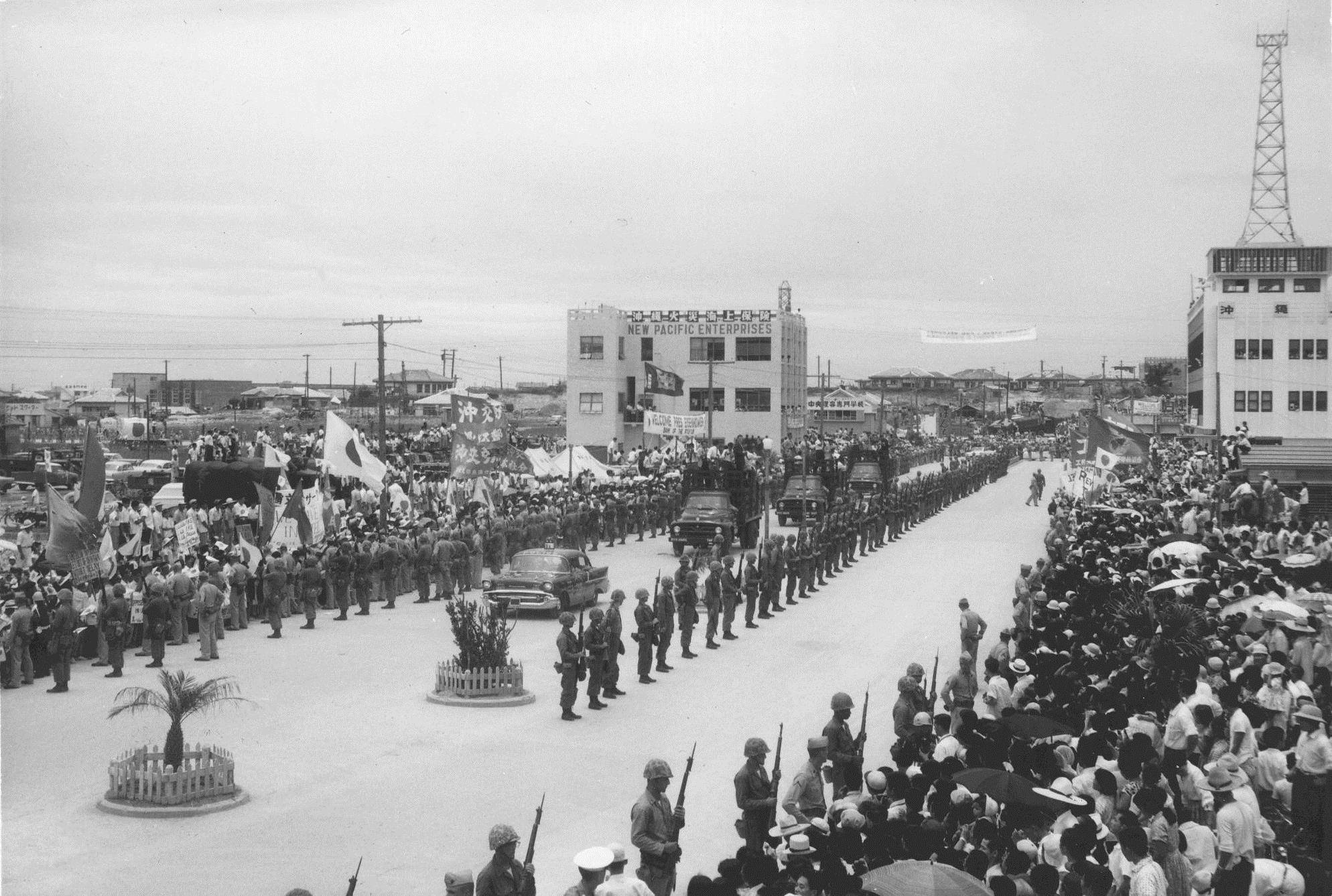When a leader visits a location in an official capacity, it is essential that he or she knows what the goal is, what he/she hopes to achieve. It is even more vital for the those issuing the invitation to have clear objectives, and to understand the risks in trying to meet them.
Neither of these factors seems to have been taken into account during U.S. President Dwight D. Eisenhower’s visit to the politically and strategically important island of Okinawa on June 19, 1960. It was meant as a goodwill mission and could have been so — Eisenhower had personally agreed to the return of the Amami Islands seven years before and more recently to the revision of the security treaty with Japan — but the visit as a whole actually increased the frustrations in Okinawa over the continued U.S. administration of the islands.
Indeed, the message relayed at the time — that the trip would show “U.S. interest in the welfare of the Ryukyuan people” — was only decided after the trip had been planned. The first version of the itinerary, in fact, only had the president visiting the Kadena Air Base.


















With your current subscription plan you can comment on stories. However, before writing your first comment, please create a display name in the Profile section of your subscriber account page.